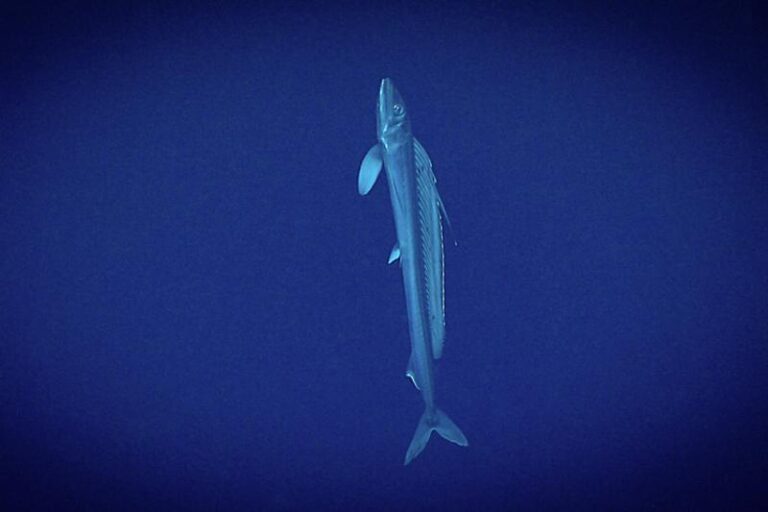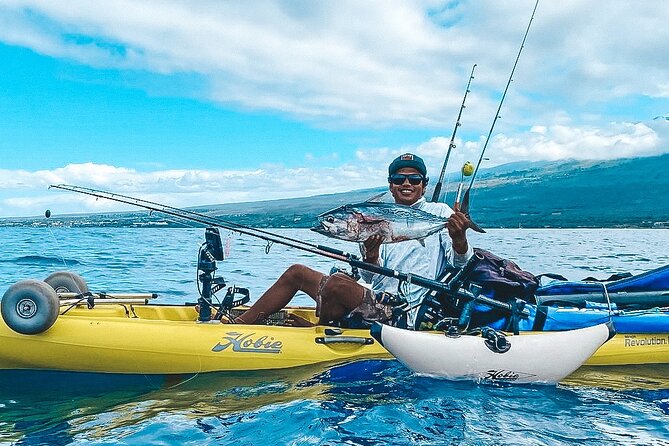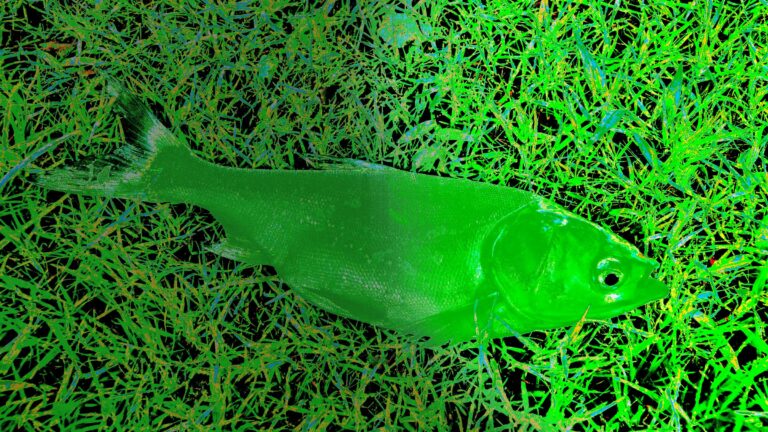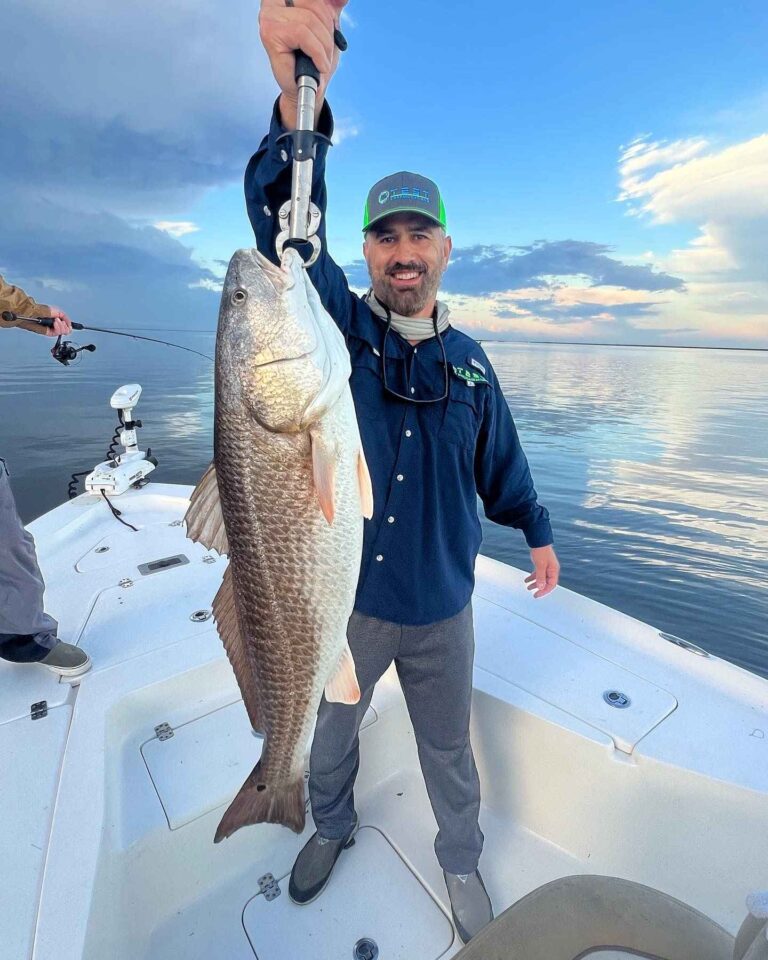The best bait for deep sea fishing is live or cut bait such as squid, mackerel, or sardines. Deep sea fishing requires bait that can attract larger predatory fish at significant depths, and these bait options are proven to be effective in enticing bites from a variety of deep-sea species.
Whether targeting marlin, tuna, or grouper, using fresh and lively bait will increase your chances of success on your deep sea fishing adventure. So, make sure to stock up on these bait options before heading out to sea.
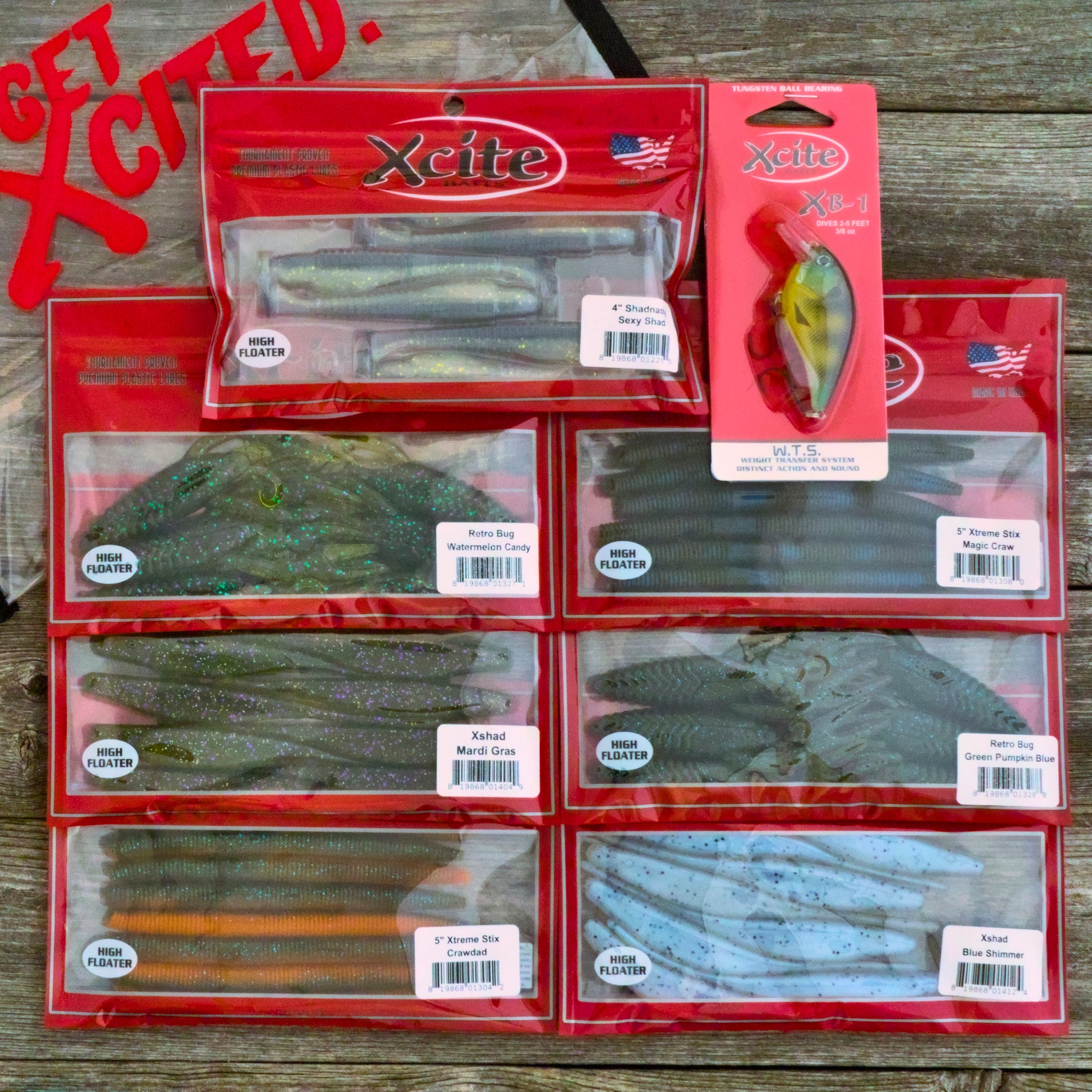
Credit: xcitebaits.com
Why Choosing The Best Bait Matters
Bait Selection As A Crucial Factor
Choosing the right bait is essential for a successful deep-sea fishing expedition. The type of bait you use can make a significant difference in attracting deep-sea fish. Here are some key points to consider when selecting the best bait:
- Understanding the fish: Different species of fish have distinct preferences when it comes to bait. Research the target fish in your fishing location to determine the most effective bait options.
- Natural versus artificial bait: Natural bait, such as live or fresh-cut bait, is often preferred as it imitates the natural food source of the fish. Artificial bait, such as lures, can also be effective if they closely resemble the fish’s prey.
- Location and depth: Consider the fishing location and the depth at which you plan to fish. Some bait is more suitable for shallow waters, while others work better in deeper waters.
- Seasonal variations: Bait preferences can change depending on the season. For example, during certain times of the year, fish may be more attracted to bait that mimics the abundance of food available in their natural environment.
Role Of Bait In Attracting Deep Sea Fish
Bait plays a vital role in attracting deep-sea fish and enticing them to bite. Here are some key points to understand the significance of bait in deep-sea fishing:
- Food source imitation: Bait is used to imitate the natural food source of the fish, making it more likely for them to strike. It is crucial to choose bait that closely resembles the prey fish commonly found in the area.
- Scent and visual cues: Bait releases scents into the water, which can attract fish from a distance. Visual cues, such as the appearance and movement of the bait, also play a role in grabbing the attention of deep-sea fish.
- Triggering the predatory instinct: The right bait can trigger the predatory instinct in deep-sea fish, making them more inclined to strike. It creates an opportunity for anglers to effectively lure the fish towards their hooks.
- Competing for food: Deep-sea fish are often in competition for limited food resources. Using the best bait increases your chances of outcompeting other anglers and catching more fish.
By understanding the crucial role of bait in attracting deep-sea fish, you can increase your chances of a successful catch. Selecting the right bait that mimics natural food sources and triggers the predatory instinct of fish greatly enhances your fishing experience.
Remember to consider fish preferences, location, depth, and seasonal variations when making your bait selection. Good luck and happy deep-sea fishing!
Factors To Consider When Selecting Deep Sea Fishing Bait
Deep sea fishing is an exciting and challenging sport that requires careful consideration when selecting the right bait. The bait you choose can greatly impact your chances of catching the target species. Here are some important factors to consider when selecting deep sea fishing bait:
Matching Bait To Target Species:
- Research the target species: Before hitting the open waters, gather as much information as possible about the fish species you hope to catch. Understanding their feeding habits, preferences, and behavior will help you select the most suitable bait.
- Use natural bait: In deep sea fishing, natural bait is often more effective as it closely mimics the fish’s regular diet. Live bait such as squid, sardines, mackerel, or shrimp are commonly used and can attract a variety of species.
- Consider artificial lures: If live bait is not available or suitable, artificial lures can be a good alternative. These come in various shapes, sizes, and colors to mimic baitfish or other prey. Experiment with different types of lures to see what works best for your target species.
Understanding Fish Preferences:
- Pay attention to scent: Fish rely heavily on their sense of smell to locate food. Choosing bait with a strong scent or adding scent attractants can increase your chances of attracting fish.
- Consider the size of the bait: Matching the size of your bait to the target species is crucial. Larger fish tend to go for larger prey, while smaller fish may be more attracted to smaller bait. Adjust your bait size accordingly to increase your chances of success.
- Take into account the fish’s feeding habits: Some fish species are more active during certain times of the day or under specific conditions. Determine whether your target species are more likely to be feeding near the surface, on the bottom, or somewhere in between to choose the appropriate bait and fishing technique.
Considering Water Conditions:
- Water visibility: In clear waters, using natural bait is often more effective as fish can see it more easily. Alternatively, in murky or cloudy waters, brightly colored lures or bait that creates vibration or noise can attract attention.
- Temperature and season: Fish are influenced by water temperatures, which can affect their feeding patterns and preferences. Research the optimal temperature ranges for your target species and select bait that matches those conditions.
- Depth and location: Different fish species inhabit different depths and locations within the sea. Adjusting your bait selection to match the corresponding depth and location can increase your chances of attracting the right fish.
Remember, experimentation and adapting to changing conditions is key in deep sea fishing. What works one day may not work the next, so be open to trying different baits and techniques. By considering factors like matching bait to target species, understanding fish preferences, and taking water conditions into account, you can increase your chances of a successful deep sea fishing trip.
Happy fishing!
Top Bait Options For Deep Sea Fishing
Deep sea fishing is an exhilarating experience that promises adventure and the possibility of landing some impressive catches. As any seasoned angler knows, having the right bait can make all the difference in attracting the attention of those elusive deep sea dwellers.
In this post, we will explore the top bait options for deep sea fishing, divided into three categories: live bait, dead bait, and artificial bait. So let’s dive in and discover the best baits to enhance your deep sea fishing experience.
Live Bait Options:
- Sardines, anchovies, and herring: These small baitfish are highly effective in attracting larger predatory species such as tuna, marlin, and mahi-mahi. Their natural swimming action and scent make them irresistible to hungry game fish. Simply hook them through the nose or attach them to a rig and let their enticing movement work its magic.
- Shrimp and squid: Known for their versatility, shrimp and squid can entice a variety of saltwater fish species. Their soft texture and strong aroma make them excellent choices for enticing bottom-dwelling species like snapper, grouper, and flounder. Rig them on a hook to present them naturally or use them as part of a bait rig for added attraction.
Dead Bait Options:
- Mackerel and mullet: These larger baitfish are perfect for targeting big game fish such as marlin, sailfish, and sharks. Their oily flesh and strong scent can travel long distances, attracting the attention of aggressive predators. Cut them into chunks or fillets and deploy them on a rig or set them as a trolling bait.
- Bonito and skipjack tuna: These medium-sized baitfish species are highly effective when targeting tuna, wahoo, and king mackerel. Their lively swimming action and oily flesh create an irresistible presentation. Use them whole or as cut bait to tempt those high-speed predators lurking below.
Artificial Bait Options:
- Soft plastic lures: Soft plastic lures come in various shapes, sizes, and colors, mimicking the appearance and movement of natural baitfish. They are incredibly versatile and can be used to target a wide range of species, including snapper, grouper, and amberjack. Rig them on a jig head or use them with a weighted swimbait hook, bouncing them off the bottom or working them through the water column to attract strikes.
- Jigs and spoons: Jigs and spoons are popular among deep sea anglers due to their ability to mimic injured baitfish. These versatile lures can be jigged vertically or cast out and retrieved at various speeds. The erratic movements and flashy designs are highly effective in enticing species like tuna, amberjack, and cobia.
Now that you’re armed with knowledge about the best bait options for deep sea fishing, it’s time to hit the open waters and test your skills. Remember, the key to success lies in understanding the behavior of your target species and selecting the right bait to tempt them.
So pack your gear, choose your bait wisely, and get ready for an unforgettable deep sea fishing adventure. Happy angling!
Pros And Cons Of Live Bait
Deep sea fishing is an exhilarating adventure for anglers who seek the thrill of reeling in big game fish from the depths of the ocean. When it comes to bait selection, live bait is a popular choice among deep sea fishermen.
There are various pros and cons to using live bait that every angler should consider before setting sail. In this section, we will delve into the advantages and disadvantages of using live bait for deep sea fishing.
Advantages Of Using Live Bait
- Live bait is irresistible to predatory fish: The natural movement and scent of live bait make it highly appealing to predatory fish species. The lively and realistic presentation can entice even the most cautious fish to strike.
- Versatility: Live bait can be used to target a wide range of species, including marlin, tuna, grouper, snapper, and more. Its ability to imitate the natural prey of different fish species makes it a versatile choice for deep sea fishing.
- Increased chance of hooking up: Live bait provides a higher probability of hooking up with a fish compared to artificial lures. Once a fish takes the live bait, it is more likely to swallow it, increasing the chances of a solid hook set.
- Natural scent: Live bait releases natural scents into the water, which can attract fish from a distance. The scent trail created by live bait can help lure in nearby predators, increasing the chances of a successful catch.
- Easy availability: Depending on your location, live bait can be readily available at local bait shops or easily caught using a cast net or a live bait trap. Having easy access to live bait can save you time and effort on your fishing expeditions.
Disadvantages Of Using Live Bait
- Responsibility and care: Live bait requires proper care and consideration to keep it healthy and lively. Keeping live bait alive and active can be challenging, especially during long fishing trips or adverse weather conditions.
- Cost: Using live bait can be more expensive compared to using artificial lures or frozen bait. Purchasing live bait regularly can add up, impacting your overall fishing budget.
- Limited durability: Live bait has a limited lifespan and may not last as long as artificial lures. As time passes, the live bait may become less lively, reducing its effectiveness in attracting fish.
- Potential for unwanted bycatch: While live bait can attract target species, it may also attract unwanted bycatch such as small fish or non-targeted species. This can result in wasted time and effort as you have to release the bycatch and re-bait your hook.
- Less control: Unlike artificial lures, live bait offers less control in terms of its movement and action. The natural behavior of live bait may not always mimic the specific movement patterns of the desired prey, potentially affecting your success in enticing fish.
Considering these pros and cons can help you make an informed decision when choosing between live bait and other bait options for your deep sea fishing excursions. Each fishing situation is unique, so it’s important to experiment and find what works best for you.
So, next time you head out for a deep sea fishing adventure, consider the pros and cons of live bait and choose the option that aligns with your angling goals. Happy fishing!
Pros And Cons Of Dead Bait
Deep sea fishing is an exhilarating adventure that requires careful consideration when it comes to choosing the right bait. Among the options available, dead bait stands as a popular choice for many anglers. However, it’s essential to understand both the advantages and disadvantages of using dead bait in deep sea fishing.
This section will delve into the pros and cons, allowing you to make an informed decision for your next fishing expedition.
Advantages Of Using Dead Bait
Dead bait offers several benefits that can enhance your deep sea fishing experience:
- Easy to handle and store: Dead bait, such as dead fish or squid, is readily available at most tackle shops and can be conveniently stored in coolers or freezer bags. Its versatility makes it a practical choice, especially for longer fishing trips.
- Strong scent and taste: Dead bait emits a strong odor and taste that can attract a wide range of predatory fish species in deep waters. The pungent scent disperses through the currents, effectively luring in hungry fish.
- Durability: Compared to live bait, dead bait tends to be more durable, making it ideal for trolling or bottom fishing. It can endure longer periods in the water without losing its appeal to fish.
- Targeting specific species: Dead bait allows anglers to target specific fish species more effectively. By selecting the appropriate type of dead bait, you can increase your chances of hooking larger predators like marlin, tuna, or sailfish.
- Convenience for beginners: For novice anglers, using dead bait can be advantageous since it requires less skill and effort to handle compared to live bait. It provides a learning opportunity while still offering a good chance of success.
Disadvantages Of Using Dead Bait
While dead bait has its advantages, it’s crucial to also consider the drawbacks associated with its use in deep sea fishing:
- Attracts unwanted species: The strong scent of dead bait can attract not only the desired fish species but also unwanted ones. This may result in catching undesirable fish or dealing with pesky scavengers that consume the bait before reaching your targeted fish.
- Limited natural movement: Dead bait lacks the natural movement and vibrancy of live bait. Predatory fish often seek active prey, so the lack of movement may make it less appealing to certain species.
- Require regular refreshing: Unlike live bait, which remains active and enticing, dead bait loses its efficacy relatively quickly. It may be necessary to consistently refresh the bait to maintain its attractiveness to fish, depending on the water conditions and currents.
- Limited lifespan: Dead bait has a shorter lifespan compared to live bait. The decomposition process begins as soon as the bait dies, reducing its appeal to fish over time. This limited lifespan may require frequent bait changes to maximize your chances of a successful catch.
- Skillful presentation: Using dead bait effectively requires skillful presentation tactics. Proper rigging, positioning, and timing are crucial to make dead bait appear more natural and attractive to fish. This skill may take time to develop and refine.
Considering these pros and cons can help you make an informed decision when choosing the best bait for your deep sea fishing expedition. Whether you decide to go with dead bait or explore other options, understanding the advantages and disadvantages ensures you are well-prepared for a rewarding and successful fishing experience.
Pros And Cons Of Artificial Bait
Deep sea fishing is an exhilarating experience that can lead to catching large and remarkable fish species. To maximize your chances of success, choosing the right bait is crucial. While live bait is typically the go-to option for deep sea fishing, artificial bait also has its own advantages and disadvantages.
In this section, we’ll explore the pros and cons of using artificial bait for deep sea fishing.
Advantages Of Using Artificial Bait
- Versatility: Artificial bait comes in a wide variety of shapes, sizes, and colors, allowing you to mimic different prey and attract a range of fish species.
- Durability: Unlike live bait, artificial lures are much more durable and can withstand challenging deep sea conditions, including strong currents and rough waters.
- Ease of use: Artificial bait is designed for convenience. It does not require refrigeration or constant care like live bait. Simply pack your lures and you’re ready to hit the water.
- Consistency: Artificial bait offers consistency in terms of size, scent, and movement. This allows you to replicate successful fishing patterns and increase your chances of attracting fish.
- Reusability: Unlike live bait that gets used up quickly, artificial lures can be used over and over again, making them a cost-effective choice in the long run.
Disadvantages Of Using Artificial Bait
- Lack of scent: One of the key drawbacks of artificial bait is its inability to produce natural scents that live bait emits. Fish rely heavily on scent to locate their prey, and this can put artificial bait at a disadvantage.
- Learning curve: Using artificial bait effectively requires some skill and practice. It may take time to learn the proper techniques for casting, retrieving, and working the lure to attract fish.
- Limited movement: While artificial lures offer consistent movement, they lack the natural, unpredictable motion of live bait. This can make it more challenging to entice certain fish species that are particularly responsive to lively, erratic movements.
- Adaptability: Deep sea fishing conditions can change rapidly, and fish behavior can vary. Artificial bait might not be as adaptable to these changing conditions as live bait, which can hinder your chances of success in certain situations.
- Visibility: Depending on the water clarity and light conditions, artificial bait may not be as visible or enticing to fish as live bait, which is inherently more attention-grabbing.
Artificial bait for deep sea fishing has its own advantages and disadvantages. It offers versatility, durability, and ease of use, but lacks the natural scent, adaptability, and movement that live bait provides. Whether you decide to use artificial bait or live bait ultimately depends on your fishing preferences, the species you’re targeting, and the conditions you’ll be facing.
Experimentation and adapting your approach will help you determine the best bait for your deep sea fishing adventures.
Techniques For Maximizing Bait Effectiveness
Deep sea fishing is an exciting adventure that requires skill and preparation. One key aspect of a successful deep sea fishing trip is choosing the right bait. The bait you use can make all the difference in attracting and catching the big fish.
In this section, we will explore effective techniques for maximizing the effectiveness of your bait. From proper rigging techniques to choosing the right hook size and varying bait presentation, we’ll cover it all.
Proper Rigging Techniques
- The way you rig your bait can greatly impact its effectiveness. Here are some key rigging techniques to consider:
- Live bait: If you’re using live bait such as squid or small fish, make sure they are securely hooked. This will ensure that they stay on the line and appear natural in the water.
- Dead bait: When using dead bait, it’s important to rig it in a way that mimics the movement of a live fish. This can be achieved by inserting the hook through the nose or back of the bait and allowing it to swim freely in the water.
Choosing The Right Hook Size
- The size of the hook you use can determine the type and size of fish you attract. Consider the following when choosing the right hook size:
- Match the hook size to the bait: It’s important to select a hook size that is appropriate for the size of your bait. If the hook is too large, it may overpower the bait and make it less appealing to the fish.
- Consider the target species: Different fish species have different mouth sizes and biting habits. Research the target species and choose a hook size that is suitable for their feeding patterns.
Varying Bait Presentation
- Fish can become wary of the same bait presentation over time, so it’s important to vary your approach. Here are some techniques to keep in mind:
- Change the depth: Try fishing at different depths to see where the fish are biting. Some species may be found closer to the surface, while others may be deeper down.
- Alter the speed: Experiment with the speed at which you reel in your bait. Some fish may be attracted to a fast-moving bait, while others may prefer a slower, more subtle approach.
- Use different colors: Fish can be attracted to specific colors depending on water conditions and prey preferences. Consider using a variety of colored bait to see what works best.
By utilizing proper rigging techniques, choosing the right hook size, and varying your bait presentation, you can maximize the effectiveness of your bait and increase your chances of a successful deep sea fishing trip. Remember to adapt your approach based on the conditions and the behavior of the fish you are targeting.
Happy fishing!
Tips For Effective Deep Sea Fishing With Bait
When it comes to deep sea fishing, using the right bait can make all the difference between a successful catch and coming back empty-handed. Whether you’re targeting big game fish like marlin or tuna, or going after bottom-dwelling species like snapper or grouper, here are some tips to help you effectively use bait for deep sea fishing.
Patience And Persistence:
- Be patient: Deep sea fishing requires patience, as it may take some time for the fish to find your bait. Don’t give up too quickly and keep your line in the water.
- Experiment with bait: Different fish species have different preferences when it comes to bait. Experiment with various options such as live bait, cut bait, or even artificial lures to see what works best for your target fish.
- Vary your presentation: Sometimes fish can be finicky and prefer certain bait presentations over others. Try different techniques like trolling, drifting, or bottom fishing to see which one attracts more bites.
- Stay alert: Pay attention to any signs of fish activity, such as birds diving or fish jumping. This can indicate that there’s a feeding frenzy happening, and it’s a good time to present your bait.
Reading The Water And Understanding Tides:
- Locate underwater structures: Deep sea fish often congregate around underwater structures like reefs, wrecks, or drop-offs. Use a fishfinder or nautical chart to identify these structures and target them for better fishing.
- Understand tides: Tides play a significant role in deep sea fishing. During incoming or outgoing tides, fish tend to be more active, feeding in the tidal currents. Plan your fishing trips around these tide changes for better chances of success.
- Look for temperature breaks: Fish are sensitive to temperature changes, so look for areas where warm and cold water currents meet. This boundary, known as a temperature break or thermocline, can attract baitfish and, in turn, larger predatory fish.
Observing And Adapting To Fish Behavior:
- Watch for feeding patterns: Notice any feeding patterns or feeding frenzy activity happening in the water. This can indicate the type of baitfish the game fish are targeting, allowing you to use similar bait to attract their attention.
- Adjust your bait size: If you’re not getting bites, try adjusting the size of your bait. Sometimes fish may be more interested in larger or smaller bait depending on their feeding preferences.
- Change bait color: Fish can be attracted to certain colors depending on water clarity and conditions. Experiment with different bait colors to see which ones are more effective on a particular day.
- Pay attention to depth: Fish can be found at different depths depending on the time of day, water temperature, and currents. Use a depth finder or consult local fishing reports to determine the best depth to present your bait.
By following these tips, you can improve your chances of a successful deep sea fishing trip. Remember, patience, understanding the water, and adapting to fish behavior are key elements in attracting and enticing fish to bite your bait. Get out there and enjoy the thrill of the deep sea!
Conclusion
When it comes to deep sea fishing, choosing the right bait is crucial for a successful day on the water. After exploring various options, it is clear that different baits work best for different species of fish. For pelagic species like tuna and marlin, live bait such as mackerel or squid is often the most effective choice.
On the other hand, bottom-dwelling fish like grouper and snapper tend to be more attracted to cut bait or artificial lures. It is important to consider the location, season, and target species when selecting bait for deep sea fishing. Experimenting with different baits and techniques can help increase your chances of landing that trophy fish.
Remember to always check local regulations and follow sustainable fishing practices to preserve our valuable marine resources. So, grab your gear, choose the right bait, and get ready for an unforgettable deep sea fishing adventure. Happy fishing!

